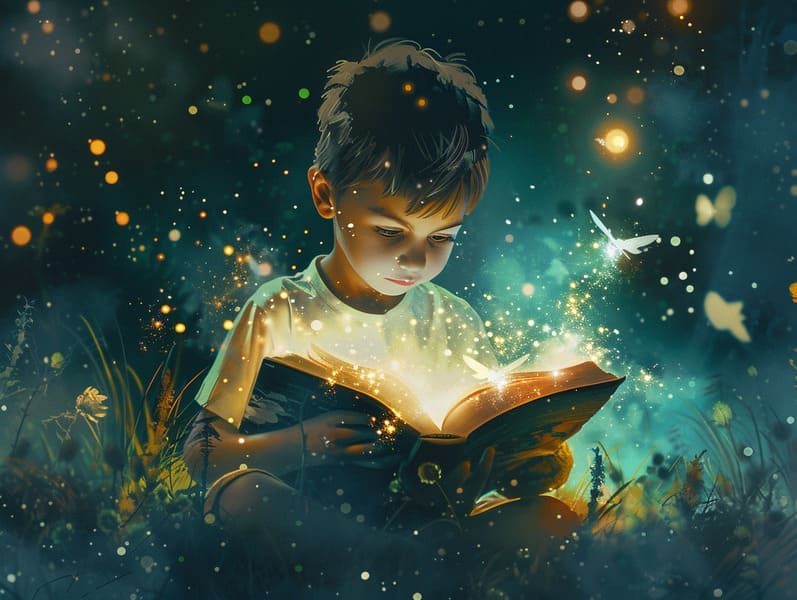
Classic fairy tales have old origins. These tales have been conveyed from one generation to the next millennia before they were ever recorded. They emerged from a variety of traditions, including American traditions. They were initially disseminated among mature audiences, often carrying themes and messages pertaining to the societal norms and beliefs of the time.
The Brothers Grimm, Jacob and Wilhelm, were among the first to collect many of these beloved tales. Their compilation, "Grimm's Fables," included classics like "The Little Glass Slipper," "Hansel and Grethel," and "The True Story of Snow White," which have since become cornerstones in the world of traditional fairy tales. Similarly, Hans Andersen's fantastical narratives, such as "The Mermaid," and "The Ugly Duckling," have captivated hearts worldwide, cementing their place in the pantheon of treasured fairy tales.
Despite their historical roots, traditional fairy tales remain as relevant as ever, especially as children's bedtime stories. These magical stories are now available in multiple formats, including colorful picture books, captivating animations, and free fairy tales online.
Their unwavering allure can be traced to several delightful features:
Valuable Lessons: Old fairy tales often whisper important moral lessons. Tales like "The Tale of the Boy Who Cried Wolf" teach the virtue of honesty, while "The Hare and the Tortoise" emphasize the benefits of determination and humbleness. These stories offer young readers clear distinctions between right and wrong, molding their moral compass in a kind yet profound way.
Kindness and Comprehension: Fairy tales frequently include protagonists facing trials and tribulations, inspiring listeners to identify with their struggles and back their triumphs. For instance, "Beauty and Her Beast" shows us the necessity of seeing beyond looks to perceive the true character of a soul, advancing insight and awareness.
Cultural Awareness: Many traditional fairy tales are imbued with the cultural contexts from which they originated. Delving into these narratives can provide captivating looks into different cultures, encouraging a sense of global appreciation and perception.
Fantasy and Innovation: The supernatural elements in classic fairy tales—spells and potions—fire up children’s creative minds. These tales guide readers to extraordinary realms, unleashing imaginative dreams and a sense of wonder that stays a lifetime.
Old fairy tales are not only whimsical but also illuminating. They act as fantastical tools in promoting various brain and heart skills in the young. When classic fairy tales are spoken, they boost language skills by offering new linguistic elements and sophisticated sentence structures. This these guys practice also develops listening abilities and attentiveness, as little ones hang on every word, ready to see what happens next.
Furthermore, contemplating the themes and characters of ancient fairy tales can advance intellectual skills and reasoning skills. Young readers are guided to spot patterns, forecast, and figure out cause and effect. These reflections also promote young ones speak out their thoughts and feelings, contributing to their emotional intelligence.
In today’s technological era, the proliferation of free fairy tales online has made these fairy tales more obtainable than ever. Web platforms and applications extend ample collections of timeless fairy tales that can be looked at or listened through anytime, anywhere. Fairy tales told out loud are particularly popular, making available an delightful method for children to delight in these bewitching tales. Read-aloud stories and narrated videos transport characters and settings to life, often accompanied by captivating harmonies and soundtracks that elevate the story adventure.
The persistent attraction of old fairy tales lies in their ability to alter to contemporary times while staying true to their central values. Contemporary updates of these narratives often highlight more varied characters and modern settings, making them familiar to today’s audience. However, the underlying themes of courage, kindness, and equity remain unchanged, continuing to move children of all ages.
Traditional fairy tales also offer a sense of reassurance and closeness. They extend a systematic narrative with a evident beginning, middle, and end, often coming to a close with the conclusion of conflicts and the triumph of virtue over vice. This constancy can be comforting for little ones, showcasing a sense of firmness in an inconstant world.
Traditional fairy tales continue to enchant and instruct new generations, maintaining their spell and value in modern society. As bedtime stories for kids, they share a perfect blend of fantasy and learning, enriching moral values, empathy, and creativity. The abundance of digital fairy tales and the in demand status of fairy tales told out loud promise that these ancient tales remain obtainable to new generations.
By sustaining and communicating these fairy tales, we continue to laud the rich tapestry of human imagination and cultural heritage. Whether you are reading a vibrantly illustrated book, seeing a web collection, or listening via an sound book, the enchantment of famous fairy tales is always within reach. These tales highlight of the unfading presence of storytelling and its ability to gather us across time and space.
No matter if you are browsing a artistically illustrated book, perusing a internet library, or listening through an audiobook, the fascination of Grimm's fairy tales is always within reach.
These stories demonstrate of the unceasing spell of fairy tales and its ability to unite us across epochs and places, forging a link that enchants and educates alike.